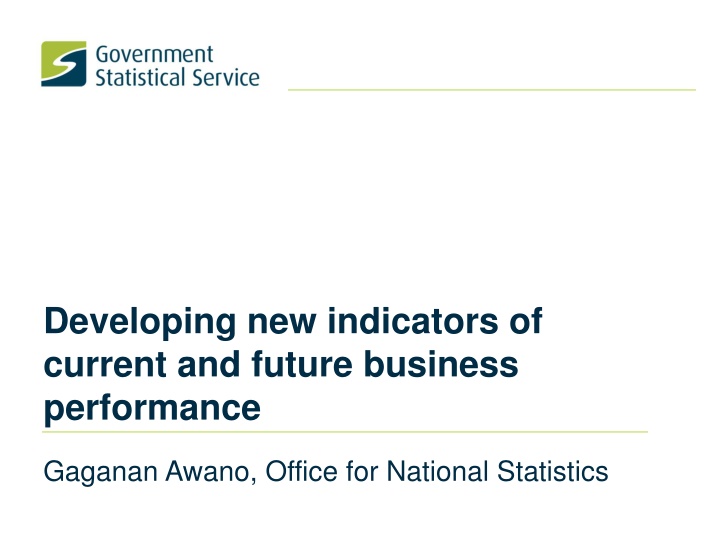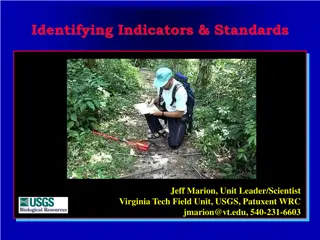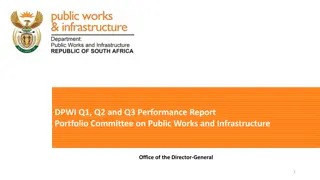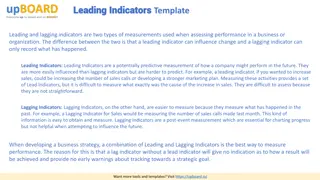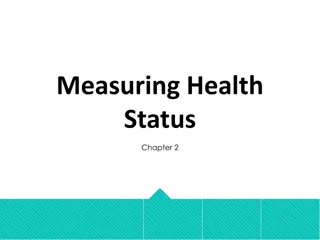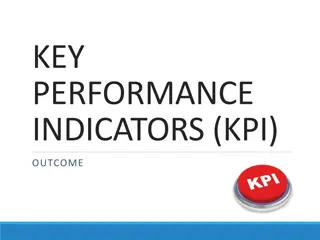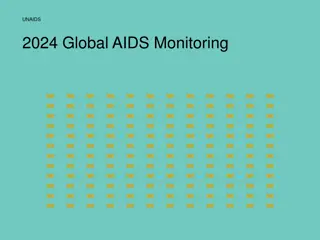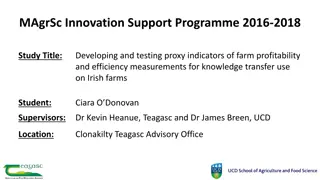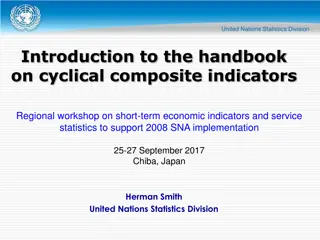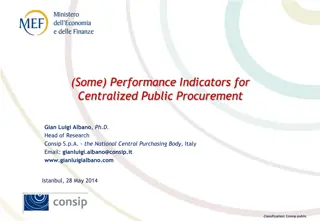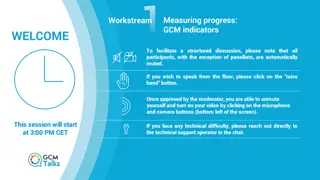Developing New Indicators of Business Performance - Insights and Approaches
Enhance analytical capability to understand large datasets, improve productivity analysis, and explore new datasets for insights. Focus on innovative surveys, linking data on FDI, and new trade data. Delve into the UK's productivity puzzle, distribution of output across firms, and current GDP per hour worked in G7 countries.
Download Presentation

Please find below an Image/Link to download the presentation.
The content on the website is provided AS IS for your information and personal use only. It may not be sold, licensed, or shared on other websites without obtaining consent from the author.If you encounter any issues during the download, it is possible that the publisher has removed the file from their server.
You are allowed to download the files provided on this website for personal or commercial use, subject to the condition that they are used lawfully. All files are the property of their respective owners.
The content on the website is provided AS IS for your information and personal use only. It may not be sold, licensed, or shared on other websites without obtaining consent from the author.
E N D
Presentation Transcript
Developing new indicators of current and future business performance Gaganan Awano, Office for National Statistics
Outline Motivation Our remit Delivering new insights on business performance i. New innovative survey on management practices ii. New approach in linking existing data on FDI iii. New approach in linking new administrative data on Trade Conclusions and next steps
Motivation The UK s Productivity Puzzle : Q4 2007=100 105 100 95 90 85 80 75 2010 2017 1994 1995 1996 1997 1998 1999 2000 2001 2002 2003 2004 2005 2006 2007 2008 2009 2011 2012 2013 2014 2015 2016 Output per hour Output per worker 3
Motivation Distribution of output per worker across firms, 000s per worker per year 2.5% 2015 2009 2007 2.0% 1.5% 1.0% 0.5% 0.0% -10 0 10 20 30 40 50 60 70 80 90 100 4 Source: Understanding firms in the bottom 10% of the labour productivity distribution in Great Britain
Our remit Enhance analytical capability to interrogate and understand large underlying datasets sources ESAS, ONS 2016 Improve existing micro-data sources to support productivity analysis Undertake research and analysis Explore new datasets to provide new insight on the productivity puzzle 6
Our remit Enhance analytical capability to interrogate and understand large underlying datasets sources ESAS, ONS 2016 Improve existing micro-data sources to support productivity analysis Undertake research and analysis Explore new datasets to provide new insight on the productivity puzzle New insights on business performance i. New innovative survey on management practices ii. New approach in linking existing data on FDI iii. New approach in linking new administrative data on Trade 7
Our approach towards delivering new insights Inter- Annual Business Survey (ABS) departmental Business Register (IDBR)
Our approach towards delivering new insights (1) Management and Expectations Survey (MES) Inter- Annual Business Survey (ABS) departmental Business Register (IDBR) Relationships between management practices and productivity
Deriving management practices scores Score 0 1/4 3/4 1 10
Management score and business outcomes GVA/worker (index) GOS ( ,000s) 10,000 350 300 8,000 250 6,000 200 150 4,000 100 2,000 50 0 0 1 2 3 4 5 6 7 8 9 10 1 2 3 4 5 6 7 8 9 10 Management score decile Management score decile Our population of interest covers businesses in production and services industries with employment of at least 10, in Great Britain. Source: ONS (2018), Management practices and productivity in British production and services industries - initial results from the Management and Expectations Survey: 2016 11
Management score and productivity Management practice score 0.0 0.2 0.4 0.6 0.8 1.0 Population 12% 19% 25th percentile 75th percentile Median These results were obtained through OLS regression analysis, controlling for management practices, log(employment), family and non-family ownership, foreign and domestic ownership, managers and non-managers with and without degree equivalent qualifications, age, age squared, industry and location fixed effects. Our population of interest covers businesses in production and services industries with employment of at least 10, in Great Britain. 12 Source: ONS (2018), Management practices and productivity in British production and services industries - initial results from the Management and Expectations Survey: 2016
Our approach towards delivering new insights (2) Management and Expectations Survey (MES) Foreign Direct Investment (FDI) Inter- Annual Business Survey (ABS) departmental Business Register (IDBR) Productivity performance of firms with inward and outward FDI relationships Relationships between management practices and productivity
How important are firms with FDI relationships? Distribution of firms by FDI status, ABS basis Percent Firms Turnover Employment 2012 2013 2014 2015 2012 2013 2014 2015 2012 2013 2014 2015 No FDI 99.1 99.0 98.9 98.9 62.2 63.8 63.2 63.6 80.1 79.8 79.4 79.3 Inward 0.8 0.8 0.8 0.8 24.9 23.7 23.2 22.8 9.8 9.9 9.8 10.0 Outward 0.1 0.2 0.2 0.3 12.9 12.5 13.6 13.6 10.1 10.3 10.8 10.7 TOTAL 100 100 100 100 100 100 100 100 100 100 100 100 Productivity performance of firms by FDI status , 000 per worker per year Median Mean Of which mean of: No FDI FDI No FDI FDI Inward FDI Outward FDI 2012 25.3 61.6 44.3 123.0 125.5 119.2 2013 26.5 53.4 47.5 156.8 159.2 161.7 2014 27.1 63.3 48.6 153.4 165.7 109.0 2015 27.7 59.3 48.3 172.7 185.6 140.3 Source: ONS (2017), Foreign direct investment and labour productivity, a micro-data perspective: 2012 to 2015
Productivity premia from FDI by industry We regressed on log(gva/worker) controlling for FDI status, including FDI and industry interactions, time, region and size F.E. Source: ONS (2017), Foreign direct investment and labour productivity, a micro-data perspective: 2012 to 2015
Our approach to deliver new insight Management and Expectations Survey (MES) Foreign Direct Investment (FDI) HMRC Trade Declarations Inter- Annual Business Survey (ABS) departmental Business Register (IDBR) Productivity performance of firms with inward and outward FDI relationships Trading patterns, dependencie s and productivity performance Relationships between management practices and productivity
HMRC Data Each observation is a specific flow (export/import) of a specific product by a specific firm to/from a specific geography at a specific point in time. Amendments by separate returns However: Intrastat threshold (varies year on year) Non-EU low-value low-net-mass trade no disaggregate data 17
Methods The transactions data to which we have access is for VAT units However, the estimates of productivity that we hold are on a Reporting Unit basis which means that our work has proceeded in two stages: a) Linking VATREF TIG data to Enterprises b) Apportioning Enterprise trade to Reporting units 18
IDBR Structure Enterprise Group WOWREF Enterprise ENTREF Productivity data Reporting Unit VAT Unit PAYE Unit RUREF VATREF PAYEREF HMRC TIG transaction data Local Unit LUREF 19
Methods Linking TIG data on a VATREF basis to the IDBR is fairly straightforward but apportioning trade from Enterprises to reporting units is less so because businesses can have quite complex reporting arrangements
Matching: Simple Enterprises We know where to assign the data Link between RUREF and VATREF is unique (So can have multiple VATREFs but still be simple) ENTGRP 1 ENT A VAT 1 VAT 2 RU LU LU 21
Complex Enterprises ENTGRP 1 ENT A VAT 1 PAYE 1 RU 1 RU 2 LU 1 LU 2 LU 1 22
Complex Enterprises ENTGRP 1 ENT A ENT B VAT 1 PAYE 1 VAT 1 PAYE 1 RU 1 RU 2 RU 1 LU 1 LU 2 LU 1 LU 1 LU 2 23
Matching and Apportionment ENTGRP 1 ENT A ENT B VAT PAYE VAT PAYE RU RU RU LU LU LU LU LU 24
Apportionment methods 1. By employment Divide Enterprise trade among the multiple reporting units of a business in proportion to employment 2. By Export/Import intensity of reporting unit industries Divide Enterprise trade among the multiple reporting unit of a business based on industry-product weights matrix. 25
Apportionment methods Suppose an Enterprise A is observed importing 100 of product [x]. How do we split the 100 among the Enterprise s three Reporting Units? Apportionment by employment: Enterprise A Employment Est. Trade RU 1 15 15/50*100= 30 RU 2 10 10/50*100= 20 RU 3 25 25/50*100= 50 Total 50 100 26
Apportionment methods Suppose an Enterprise A is observed importing 100 of specialist roofing materials. How do we split the 100 among the Enterprise s three Reporting Units? Apportionment by employment: Enterprise A Employment Industry Est. Trade RU 1 15 41 15/50*100= 30 RU 2 10 42 10/50*100= 20 RU 3 25 65 25/50*100= 50 Total 50 100 Industry 41- Construction of buildings Industry 42- Civil engineering Industry 65- Insurance, reinsurance and pension funding 27
Apportionment methods Suppose an Enterprise A is observed importing 100 of specialist roofing materials. How do we split the 100 among the Enterprise s three Reporting Units? Apportionment by employment: Enterprise A Employment Industry IPH Weighted Emp. Est. Trade RU 1 15 41 55 =(15*55)=825 825/1825*100= 45 RU 2 10 42 75 =(10*75)=750 750/1825*100= 41 RU 3 25 65 10 =(25*10)=250 250/1825*100= 14 Total 50 1825 100 Industry 41- Construction of buildings Industry 42- Civil engineering Industry 65- Insurance, reinsurance and pension funding 28
Apportionment methods Suppose an Enterprise A is observed importing 100 of specialist roofing materials. How do we split the 100 among the Enterprise s three Reporting Units? Apportionment Methods: Enterprise A Employment Industry Employment IPH RU 1 15 41 30 45 RU 2 10 42 20 41 RU 3 25 65 50 14 Total 50 100 100 Industry 41- Construction of buildings Industry 42- Civil engineering Industry 65- Insurance, reinsurance and pension funding 29
Results who trades? Wholesalers. We only see direct trade. The largest firms. Trade is very concentrated. Product mix is different for EU and Non-EU trade. 30
c.1/4 IDBR employees in large, trading firms Businesses Employment 100.00% 90.00% 80.00% 70.00% 60.00% 50.00% 40.00% 30.00% 20.00% 10.00% 0.00% 0 to 9 10 to 49 50 to 250 250 to 2000 2000+ 0 to 9 10 to 49 50 to 250 250 to 2000 2000+ Businesses Employment No Customs Data Exporters only Importers only Exporters and Importers 31
Industry Proportion of RUs by customs data status 100% 90% 80% 70% 60% 50% 40% 30% 20% 10% 0% Q A I F L K OP M N S J R H DE B G C No Customs Data Exporters only Importers only Exporters and Importers 32
Industry C and G by far the largest Total goods exports, imports and trade balance by industry, 2016, m 200,000 150,000 100,000 50,000 0 -50,000 -100,000 -150,000 -200,000 -250,000 Exports Imports Balance 33
EU and Non-EU Trade in Goods by Industry 15,000 150000 10,000 100000 5,000 50000 0 0 -5,000 -50000 -10,000 -100000 -15,000 -150000 Non-EU Non-EU Non-EU Non-EU Non-EU Non-EU Non-EU Non-EU Non-EU Non-EU Non-EU EU EU EU EU EU EU EU EU EU EU EU M B DE* A S F N H J C C G G 34 Exports Imports Series7 Balance
Number of products by size Mean number of products (4-digit COMCODE) exported (exporters) and imported (importers) 50 45 40 35 30 25 20 15 10 5 0 0 to 9 10 to 49 50 to 250 250 to 1000 1000+ 0 to 9 10 to 49 50 to 250 250 to 1000 Excluding industry G Industry G Products exported to EU Products exported to Non-EU Products imported to EU Products imported from Non-EU 35
90 Median GVA/worker, firm weighted, 1000 80 70 60 50 40 30 20 10 0 36 2006 2008 2010 2012 2014 2016 2006 2008 2010 2012 2014 2016 2006 2008 2010 2012 2014 2016 2006 2008 2010 2012 2014 2016 2006 2008 2010 2012 2014 2016 No customs data Premium: non-intensive Premium: Exports/turnover > 10% Premium: Imports/IC > 10% Premium: Both
Regressions 1 2 3 4 5 6 ln(prod) ln(prod) ln(prod) ln(prod) ln(prod) ln(prod) 0.35*** 0.35*** 0.24*** (56.1) (56.4) (41.8) 0.25*** 0.26*** 0.27*** (43.2) (44.5) (49.5) 0.21*** (35.9) 0.22*** (37.2) 0.021***0.017***0.019*** (24.8) (20.3) 0.14*** (16.6) 0.21*** (34.6) 0.20*** (33.8) i.Exp. i.Imp. ln(employment) (22.2) 0.15*** (17.4) i.Ownership: EU i.Ownership: USA 0.18*** 0.19*** (18.2) (19) i.Ownership: Japan 0.35*** 0.35*** (9.85) (9.89) i.Other foreign own 0.15*** 0.15*** (16.4) (16.5) 0.043*** (5.85) 0.19*** (30.2) 0.017** (2.62) 0.18*** (30.7) i.Exp.-EU i.Exp-Non-EU i.Imp-EU i.Imp-Non-EU Year F.E. Industry F.E. Adjusted R2 N No No Yes No Yes Yes Yes Yes Yes Yes Yes Yes 0.049 369,807 369,807 369,041 369,041 369,041 369,041 0.054 0.202 0.203 0.205 0.204
Next steps 1. Initial paper published July 6th 2018 2. Develop productivity analysis further. Panel data analysis. 3. Sensitivity analysis: other EPH/IPH assumptions 4. Compare with other surveys (ASGS, Purchases) 5. Expand time period 2017 and back to 2005 6. FDI and trade in services
Questions? 39
Extra slides 40
Alignment with official sources UK Exports: EU and non-EU, ONS and HMRC, SITCs 0-8, NSA bn/quarter 45 40 35 30 25 20 15 ONS EU Exports HMRC EU Exports ONS Non-EU Exports HMRC Non-EU Exports 10 5 0 Q1 2008 Q1 2010 Q1 2012 Q1 2014 Q1 2016 41
Alignment with official sources bn/quarter UK Imports: EU and non-EU, ONS and HMRC, SITCs 0-8, NSA 70 60 50 40 30 20 ONS EU Imports HMRC EU Imports ONS Non-EU Imports HMRC Non-EU Imports 10 0 Q1 2008 Q1 2010 Q1 2012 Q1 2014 Q1 2016 42
HMRC Data match success against IDBR Trade by match success (exports left, imports right) 100% 95% 90% 85% 80% 75% 70% 2008 2009 2010 2011 2012 2013 2014 2015 2016 2008 2009 2010 2011 2012 2013 2014 2015 2016 Total trade in goods matched to IDBR Foreign VAT registration/EORI number reference Other match failure Unregistered or no VAT reference Administrative entry 43
Matching Only half of workers are in simple enterprises 2016 Q4: WOWREFs/ENTREFs RUREFs Employment Simple enterprise 1,872,000 1,872,000 13,020,000 Complex enterprise 31,500 104,000 11,780,000 44
Comparison with ABS (2016) Administrative data Total value of trade (Admin) No firm transactions data Some firm transactions data million % of group Non-exporter 968 921 1,581 8% Unique VAT reference RU link Exporter 396 2,730 17,804 92% Non-exporter 1,048 1,944 25,718 21% VAT reference links to multiple RU Exporter 187 2,633 98,766 79% ABS response Non-importer 505 891 2,676 6% Unique VAT reference RU link Importer 387 3,239 39,173 94% Non-importer 640 1,726 34,753 22% VAT reference links to multiple RU Importer 236 3,205 124,134 78%
